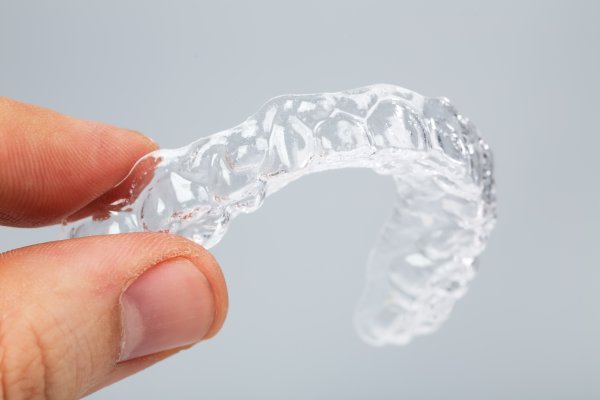Does Clear Aligner Teeth Straightening Hurt?

Clear aligners work by correcting the positions of the teeth with the use of precision force. Anyone who has gone through braces will tell you how uncomfortable they felt on the day they were first fitted with braces. Unfortunately, a little discomfort is a feature of many orthodontic treatments, not a bug. Clear aligners are no exception. To help you better understand your experience with clear aligners, here is a brief explanation of how they work.
The basics of clear aligners
Clear aligners come in the form of custom-made teeth trays. They are designed to fit tightly over a patient’s teeth, and they have a shape that is almost identical to the teeth. This slight difference in shape is what allows the aligners to use force to slowly move the teeth into a slightly better alignment. After two weeks, the aligner trays and the patient’s teeth should have the exact same shape.
Once this happens, the patient will no longer feel any pressure or discomfort. They will be ready to move on to the next set of aligners. The new set of aligners will have a slightly different shape than the patient’s teeth. Once again, the patient will feel some discomfort as the aligners exert pressure on the teeth and slowly move them to a new alignment. The patient’s teeth should be ready for a new set of aligners once every two weeks. They will feel some discomfort in the days following each switch.
Why clear aligners may cause pain
There are several reasons why a set of clear aligners can cause pain. Some of the causes are nothing to worry about and can be managed with home remedies. Others warrant a trip to the orthodontist. Here are a few of them:
1. The pressure exerted by the aligners on the teeth
As the aligners begin to do their job, a person may experience soreness as the teeth are pushed into a better alignment. The soreness is most pronounced when a person switches to a new set of aligners. The discomfort goes away after a few days. A person can manage the discomfort by:
- Doing chewing exercises to flex the teeth and gums
- If the soreness turns into pain, a person can ask the orthodontist for a prescription for painkillers or anti-inflammatories
- A person should switch to new aligners right before they go to bed. This way, they can sleep through the soreness that comes with a new set of aligners
2. Irritation of the soft tissue in the mouth
Clear aligners are more comfortable than braces, but a person still needs to get used to them. They can cause soreness as they rub against the insides of the cheeks. With time, the person develops ‘calluses’ in their mouth, which eliminates the soreness. Sometimes, the aligners may have rough edges that break the skin. When this occurs, the person should see their orthodontist to have the aligners adjusted for maximum comfort.
3. An unrelated dental problem
A person could develop a toothache in the course of treatment. They should see their dentist and get treatment for the problem tooth.
A little discomfort is normal; unbearable pain is not
A good orthodontist will always tell you what to expect with your aligners. They will tell you when it is a good idea to get help for the pain. If you need orthodontic treatment or help with your aligners, our skilled dentists are more than happy to help. All you have to do is get in touch with us and set up an appointment.
Request an appointment here: https://www.sacramentosleepdentist.com or call Dental Excellence of Greenhaven at (916) 293-0504 for an appointment in our Sacramento office.
Check out what others are saying about our services on Google: Read our Google reviews.
Recent Posts
A dental crown, custom-made and designed to fit snugly over a tooth, addresses a range of dental concerns, from tooth replacement and protecting a weakened tooth to enhancing the appearance of your smile. Whether dealing with decay, damage, or cosmetic imperfections, this restoration offers a tailored solution. With its many applications, the dental crown is…
Dental crowns are among the most highly versatile restorations, serving both restorative and cosmetic purposes. They can both save teeth as well as help dentists replace missing ones. These restorations have been one of the most popular and effective dental restorations for decades. Here are some common ways dentists use dental crowns to restore and…
Dental crowns are caps that cover and replace natural tooth structures to restore their shape, function, and appearance. They are a popular restorative treatment that can address various dental issues. By investing in dental crowns, you are not only restoring the look of your smile, but you are also safeguarding the future of your oral…
For many people, dental anxiety is a significant barrier to getting the care they need, leading to more serious oral health issues. This fear or stress around dental visits can range from mild nervousness to intense apprehension, making it hard to schedule an appointment. However, understanding dental anxiety and learning how to manage it can…


